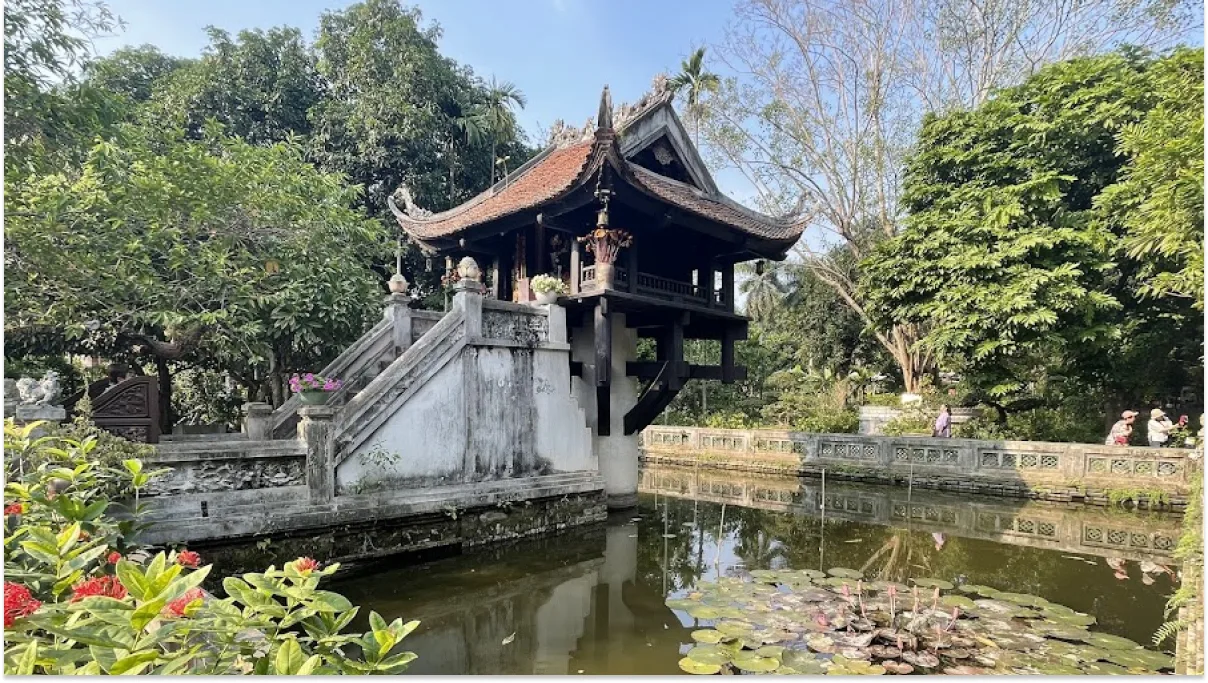
Top 10 Most Beautiful Pagodas in Vietnam: Sacred & Historic
There’s something magical about traveling in Vietnam: you can spend an entire day lost in the bustling streets of Hanoi’s Old Quarter, immerse yourself in the turquoise waters of Nha Trang, or wander through the lively alleys of Saigon. But the moment you step into a temple, all sounds seem to vanish. The toll of the temple bell, the scent of incense, the moss-covered roofs – they all open a different world, where one can find true peace.
On this journey across Vietnam, I will take you to 10 of the most beautiful temples, not just to admire their architecture or snap a few photos, but to truly feel the sacredness, the history, and the stories hidden within every stone step.
1. Perfume Pagoda (Ha Noi) – Drifting along Yen Stream, Entering a Fairy Cave
I first visited Perfume Pagoda in spring, during the bustling festival season from the first to the third lunar month. Instead of joining the crowds, I chose to go early in the morning. Mist hung over the water, small boats glided along Yen Stream, purple water lilies bloomed on both banks, and the limestone mountains stood like a traditional watercolor painting.
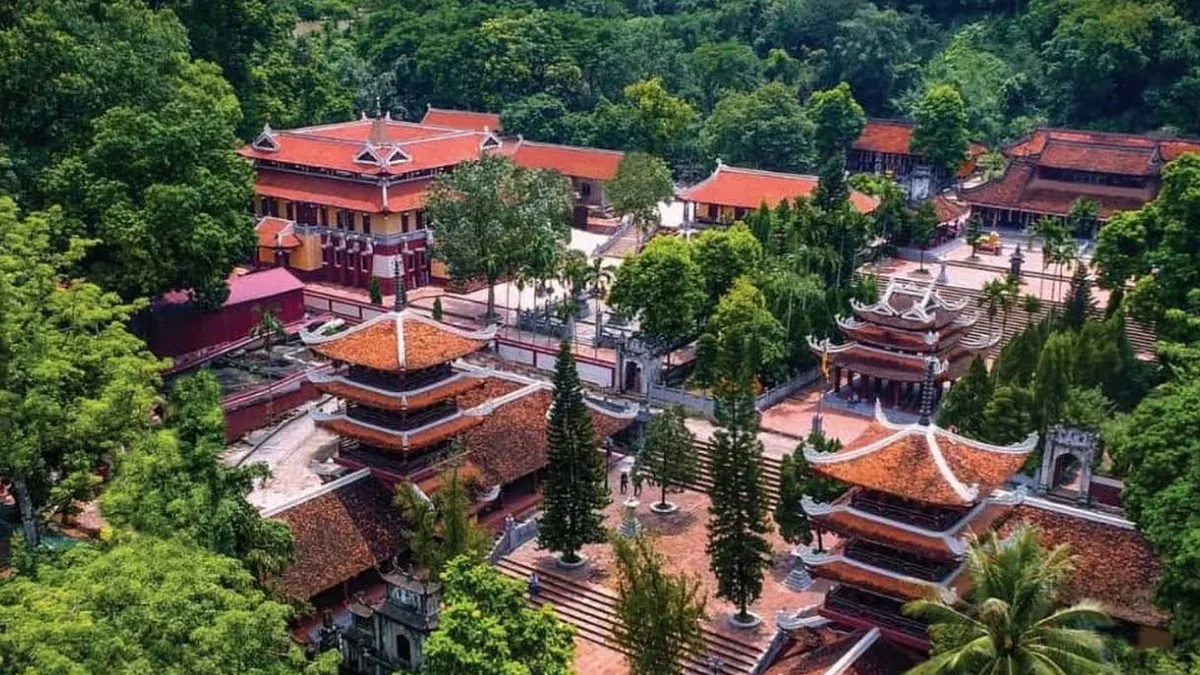
Perfume Pagoda is actually a complex of temples, caves, and shrines scattered throughout the valley. The highlight is Huong Tich Cave, known as “the most beautiful cave in the South.” Inside, sparkling stalactites resemble dragons and phoenixes, and stone steps lead deep into the mountain, inviting a sense of mystery.
Perfume Pagoda offers not only a spiritual experience but also a journey: boat rides, mountain hikes, and cave exploration – experiences rarely found in Thai or Japanese temples.
From Hanoi: 60 km, about 2 hours by car. Can go via full-day tour or bus to My Duc.
Cost: 800k–1 million VND/day (including boat ride and entrance fee).
Cuisine: mountain goat, cassava greens, wild apricot.
Cultural tip: Dress modestly and wear comfortable shoes for hiking.
2. One Pillar Pagoda (Ha Noi) – A Lotus in the Heart of Thang Long
Located in central Hanoi, One Pillar Pagoda may be the smallest temple on this list, but it carries one of the strongest symbols. The temple rises from a stone pillar in the middle of a lotus pond, like a lotus blooming from the mud.
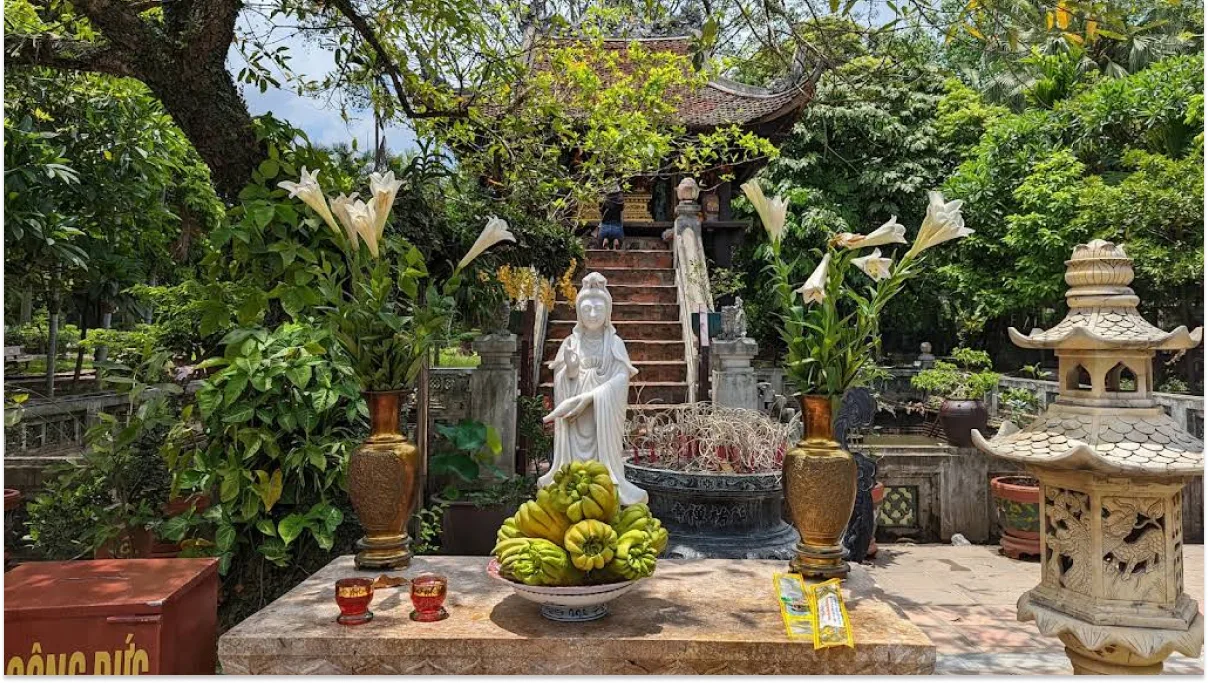
Standing in front of it, I recall the story of King Ly Thai Tong, who dreamt that Avalokiteshvara (Quan Am) gave him a lotus flower and a child. Upon waking, he built this temple in gratitude. Here, visitors can admire unique architecture while touching the thousand-year history of the capital.
Location: Next to Ho Chi Minh Mausoleum, easy to combine with a Hanoi city tour.
Cost: Free.
Tip: Early morning is quiet and perfect for photography.
3. Yen Tu Pagoda (Quang Ninh) – Pilgrimage Among the Clouds
Visiting Yen Tu is more than tourism; it’s a true pilgrimage. Riding the cable car, I gazed at the rolling mountains, with clouds swirling around. Climbing the final stone steps to Dong Pagoda at over 1,000 meters above sea level, I felt humanity’s smallness before nature.
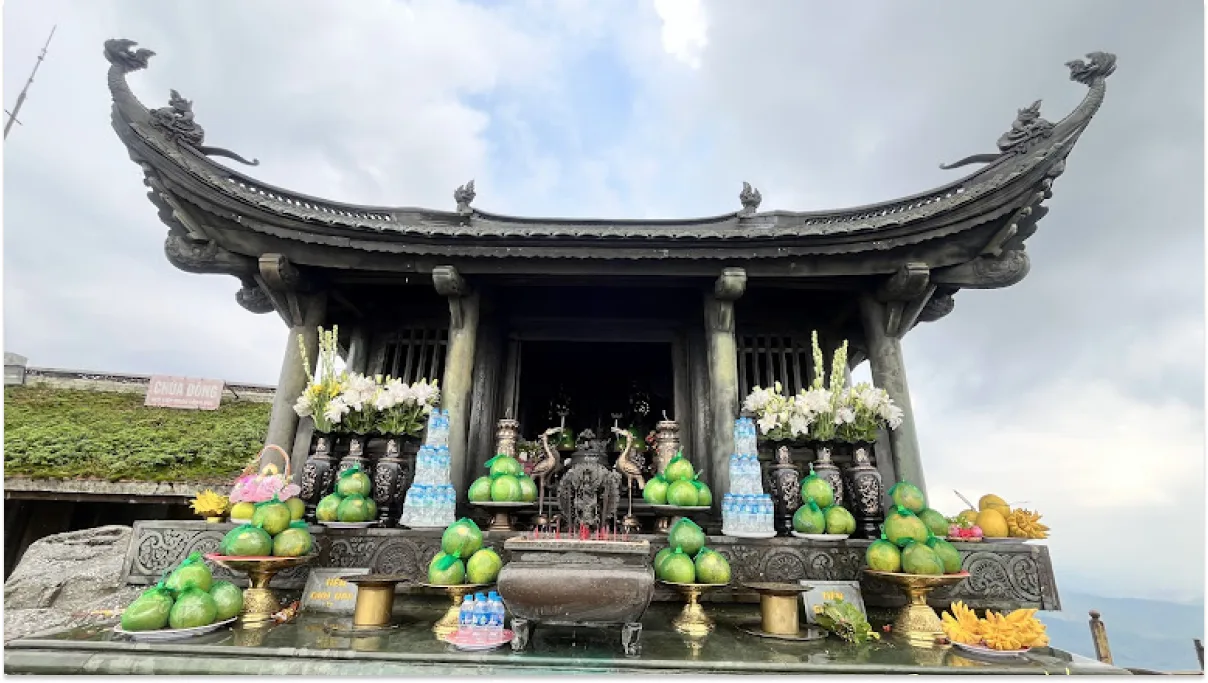
This is where King Tran Nhan Tong abdicated the throne and founded the Truc Lam Zen sect, a purely Vietnamese Buddhist tradition. Even for foreign visitors, the story is captivating: a victorious king against the Mongol invaders chooses a life of meditation, leaving a profound spiritual legacy.
Experience: Admire yellow apricot blossoms at Hoa Yen Pagoda, touch the roof of Dong Pagoda amidst the clouds.
From Hanoi: 130 km, about 3 hours.
Cost: 1.5–2 million VND/day (cable car + meals).
Cuisine: bamboo rice with hill chicken, Ha Long squid cake.
Cultural tip: Wear trekking shoes and avoid making noise on the mountain.
4. Tran Quoc Pagoda (Ha Noi) – The Ancient Temple by West Lake
Discover Tran Quoc Pagoda – The Ancient Sacred Temple by West Lake, Hanoi >>
Late afternoon, as sunset casts golden light on the 11-story lotus-shaped tower, I understood why Tran Quoc is always on the “must-visit” list for international tourists. This is Hanoi’s oldest temple, over 1,500 years old, deeply connected with the ancient capital of Thang Long.
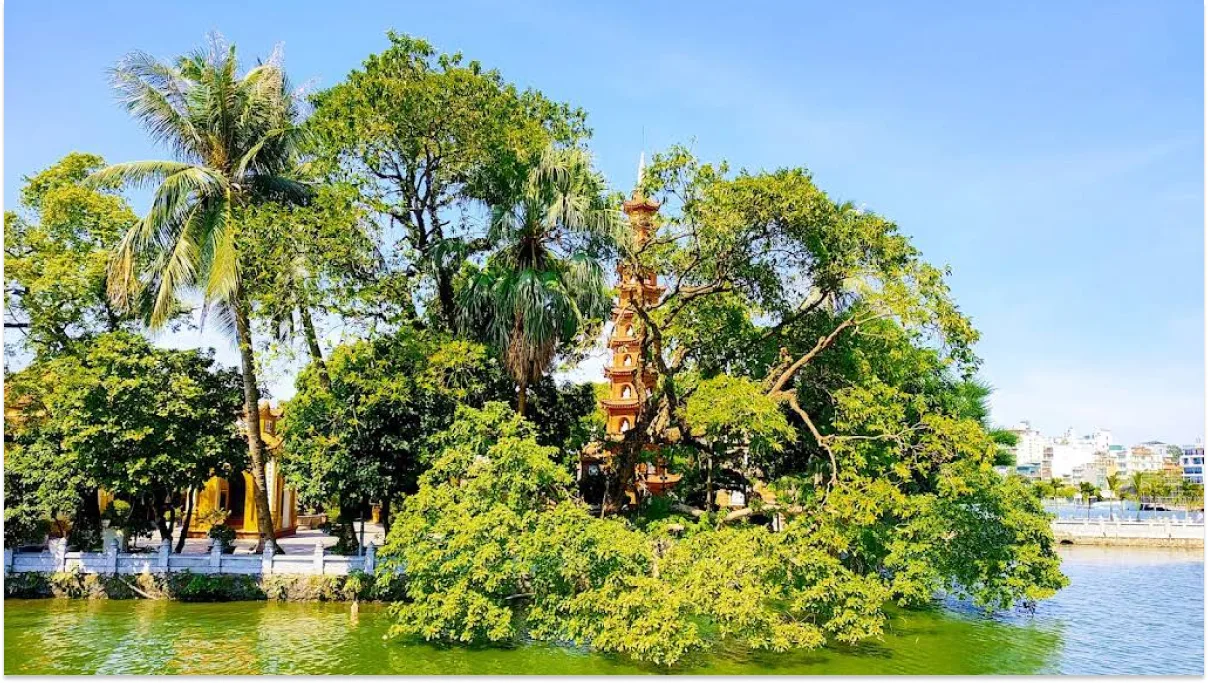
Personal experience: Sitting on the stone steps, watching the calm lake, I felt Hanoi’s peaceful side, so different from the bustling city beyond.
Cost: Free
Nearby cuisine: West Lake shrimp cake, rolled pho.
Tip: Avoid wearing shorts when entering the main hall.
5. Bai Dinh Pagoda (Ninh Binh) – Vietnam’s Buddhist Headquarters
If grandeur is what you seek, Bai Dinh is number one. The complex holds many records: the longest Arhat corridor in Asia, the tallest bronze Buddha statue, a 36-ton bronze bell.
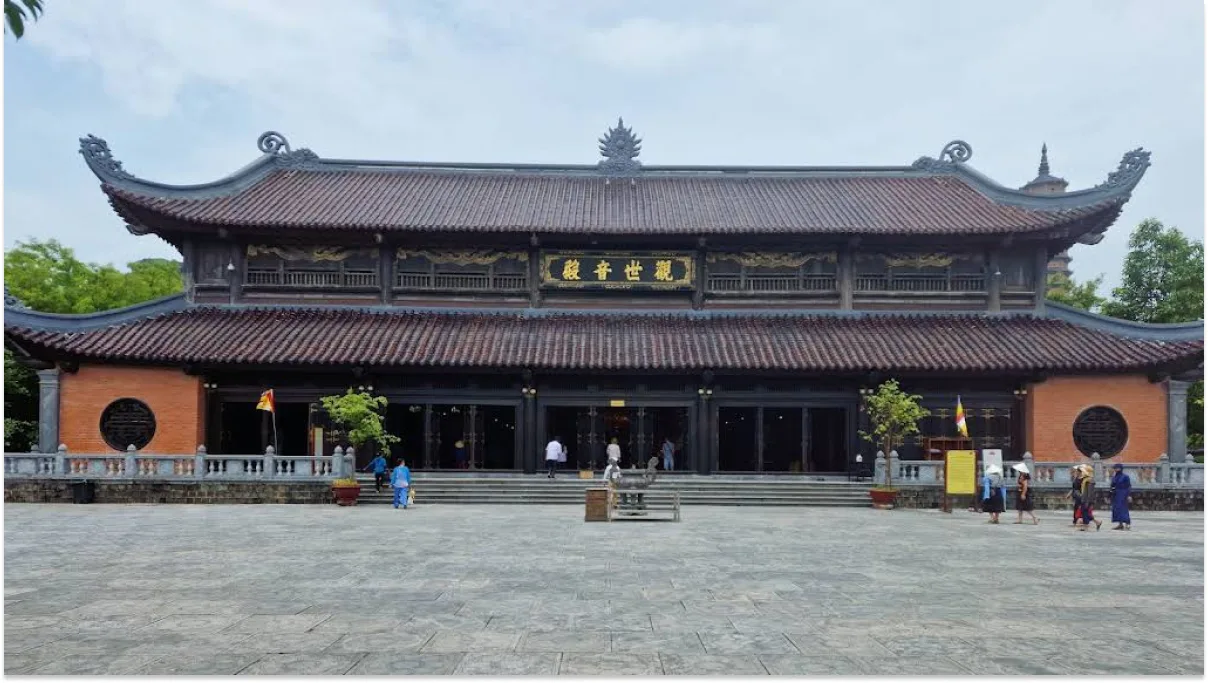
Walking along the Arhat corridor with hundreds of stone statues felt like moving through a “living Buddhist museum.” Climbing the high steps to overlook Trang An and Tam Coc, I marveled at the harmony between religion and nature.
From Hanoi: 90 km, 2 hours by car.
Cost: 1–1.5 million VND/day.
Cuisine: crispy rice, mountain goat.
Tip: Rent an electric cart inside the complex to save energy.
6. Thien Mu Pagoda (Hue) – The Riverside Tower
In Hue, I took a dragon boat down the Perfume River in the afternoon, as a gentle breeze carried the sounds of traditional Hue music. The Phuoc Duyen Tower of Thien Mu Pagoda appeared majestically, reflecting on the water.
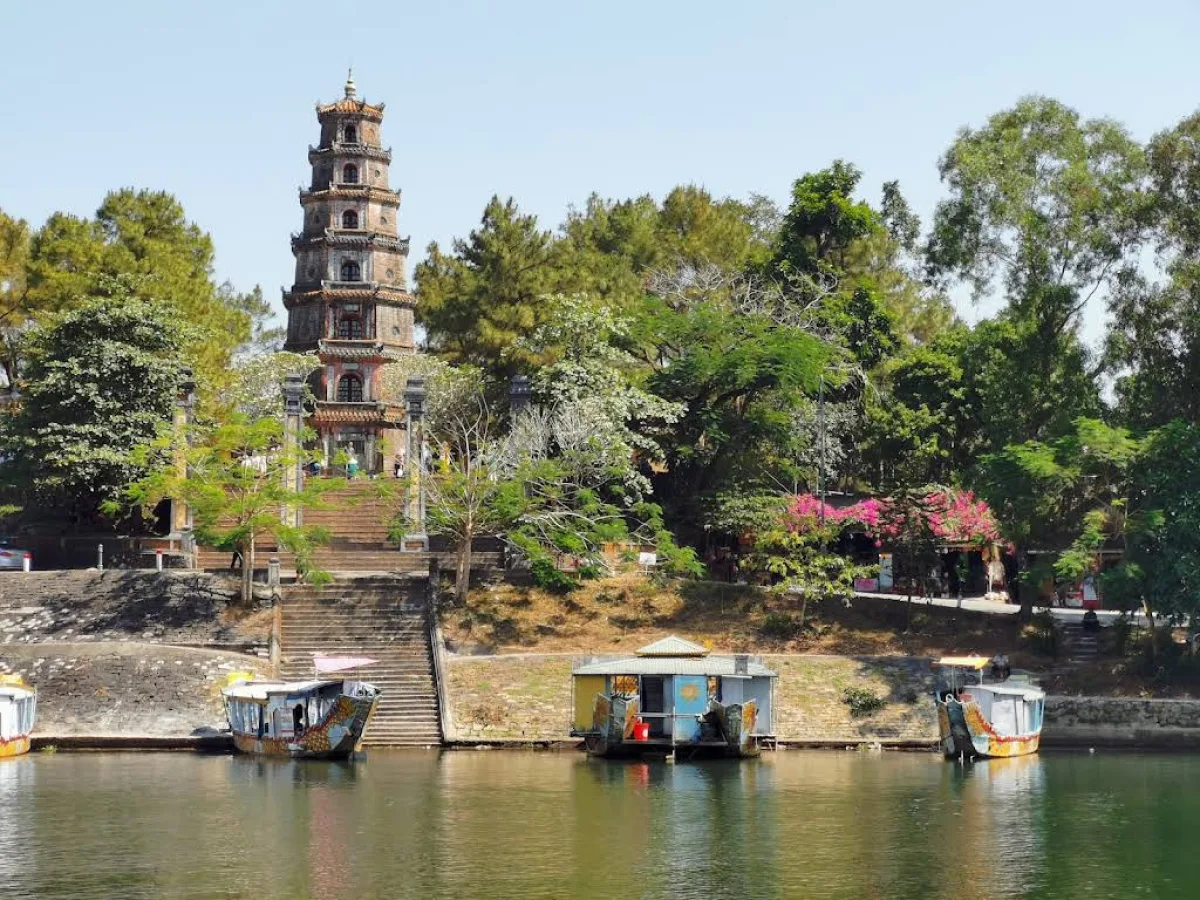
This temple is not only beautiful but rich in history, from the carriage of Thich Quang Duc to its role in the royal court. For international visitors, Thien Mu offers insight into the “soul of Hue.”
Cost: 1–1.2 million VND/day
Cuisine: clam rice, Hue beef noodle soup.
Tip: Visit in the afternoon to enjoy sunset over the Perfume River.
7. Linh Ung Pagoda (Da Nang) – Quan Am Overlooking the East Sea
On Son Tra Peninsula, Linh Ung Pagoda houses a 67-meter tall Quan Am statue gazing toward the East Sea. I arrived at sunrise; the sunlight gilded the statue, creating an unforgettable scene.
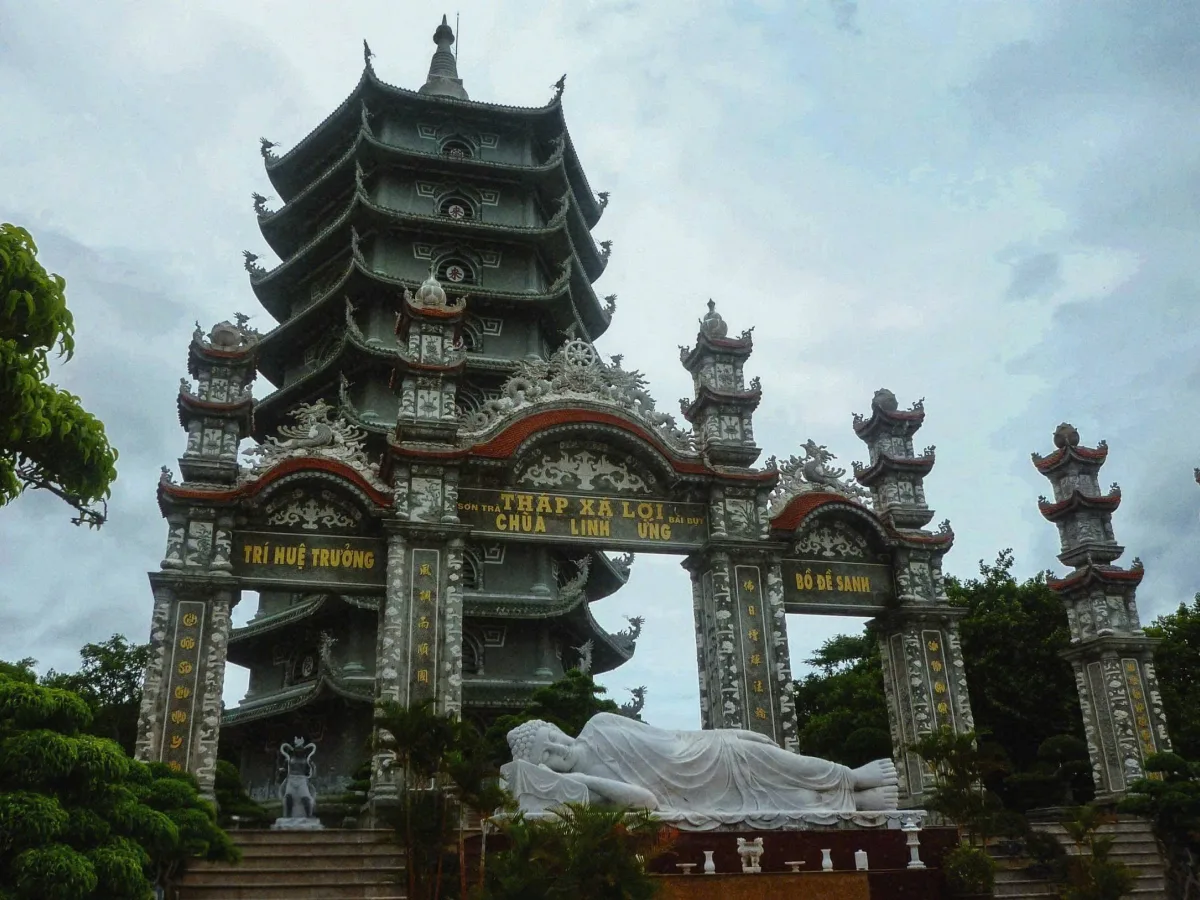
From here, you can see all of Da Nang and experience the harmony between a modern city and spiritual space.
Cost: 1–1.5 million VND/day.
Cuisine: Mi Quang noodles, Da Nang seafood.
Tip: Avoid the midday sun; sunset is also stunning.
8. Japanese Covered Bridge (Hoi An) – The Soul of the Old Town
Although called a temple, it’s actually a covered bridge built by the Japanese in the 17th century. Walking the old town at night, lanterns glowing, I stood on the bridge looking at the Hoai River, witnessing the cultural blend of Vietnam, Japan, and China.
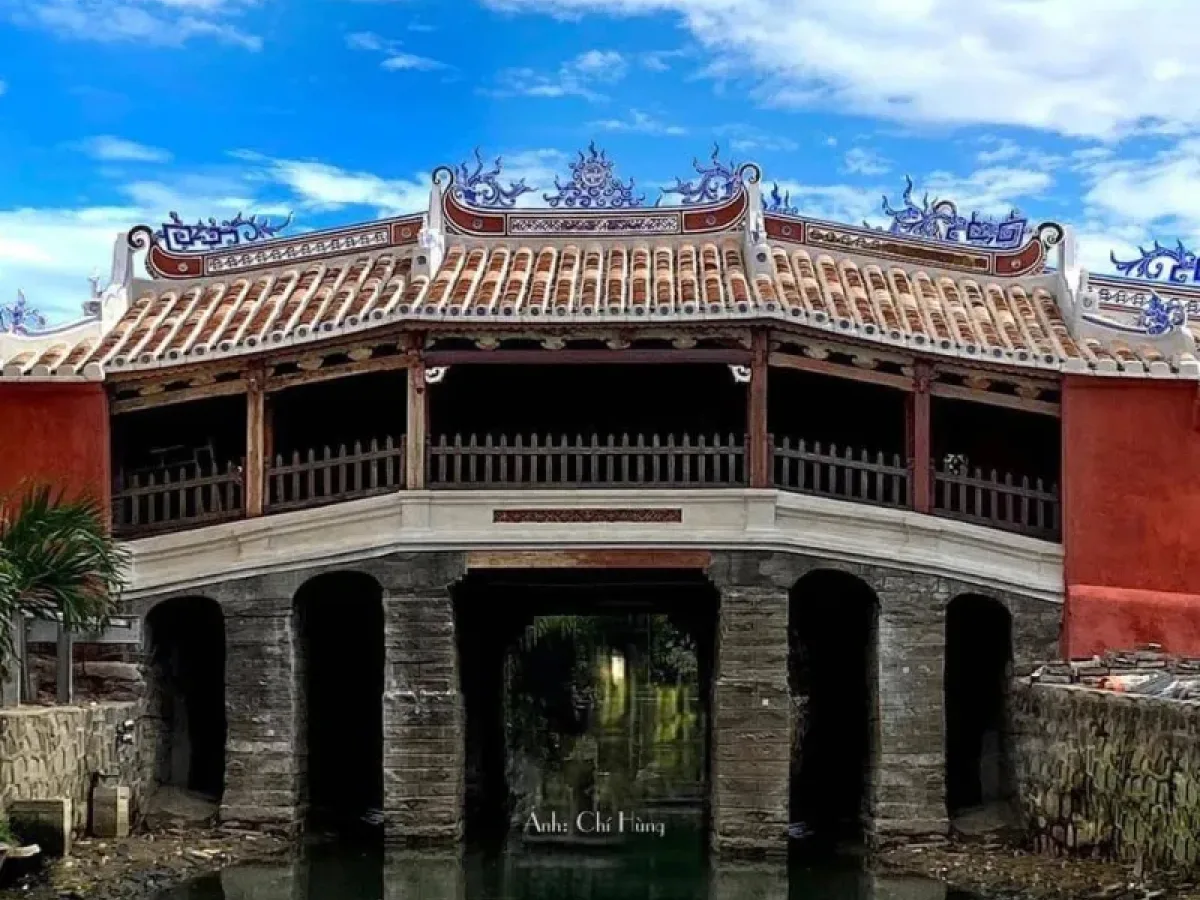
It’s a testament to Hoi An’s historical trading port, like a “mini Kyoto” yet uniquely Vietnamese.
Cost: Old town entrance fee ~120k VND/person.
Cuisine: Cao Lau noodles, Phuong bread, Hoi An chicken rice.
9. Buu Long Pagoda (Ho Chi Minh) – A Mini Bangkok in Saigon
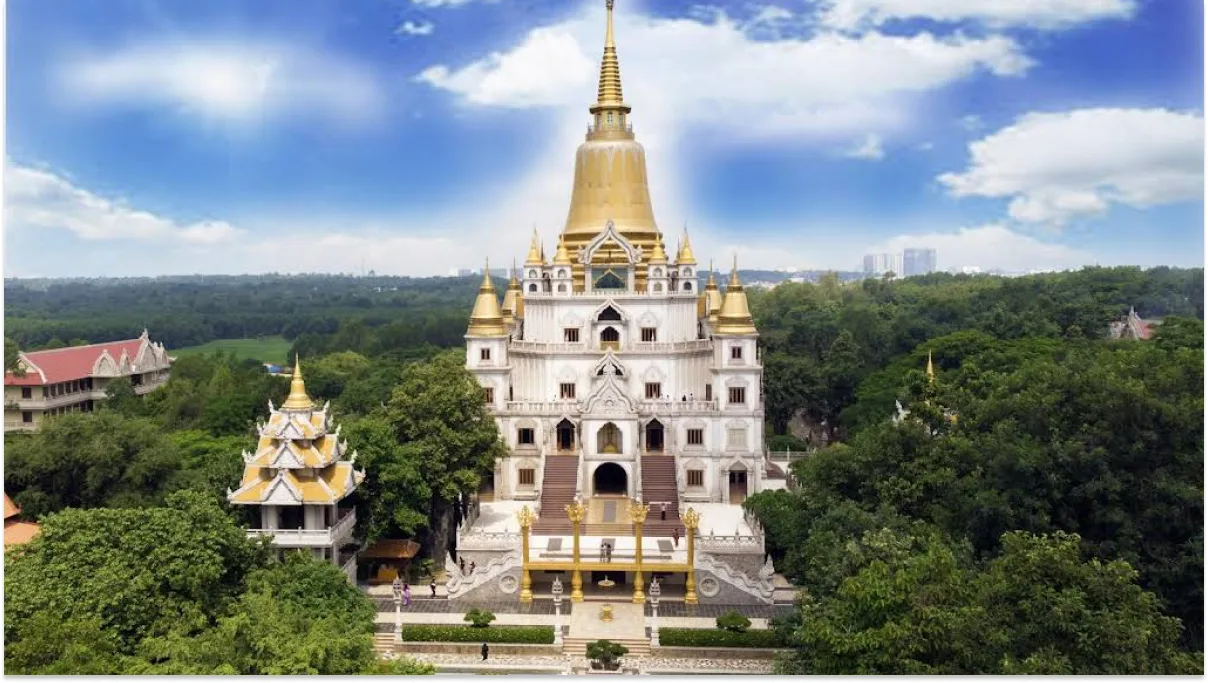
In bustling Saigon, there’s a serene corner in District 9: Buu Long Pagoda. With its golden tower and Thai-inspired architecture, it’s often called “Little Bangkok.”
Inside, absolute quiet surprises you, contrasting the busy streets nearby. It’s an ideal half-day escape from the urban rush.
Cost: 500k–1 million VND/day.
Cuisine: broken rice, Nam Vang noodle soup.
Tip: Best visited early in the morning.
10. Vinh Trang Pagoda (Dong Thap) – East-West Fusion
Located in My Tho, Vinh Trang Pagoda is an architectural mix: Vietnamese roofs, French motifs, Khmer patterns, and a giant smiling Maitreya Buddha. My favorite spot is the tree-shaded garden, filled with birdsong – a truly “Southern garden” atmosphere.
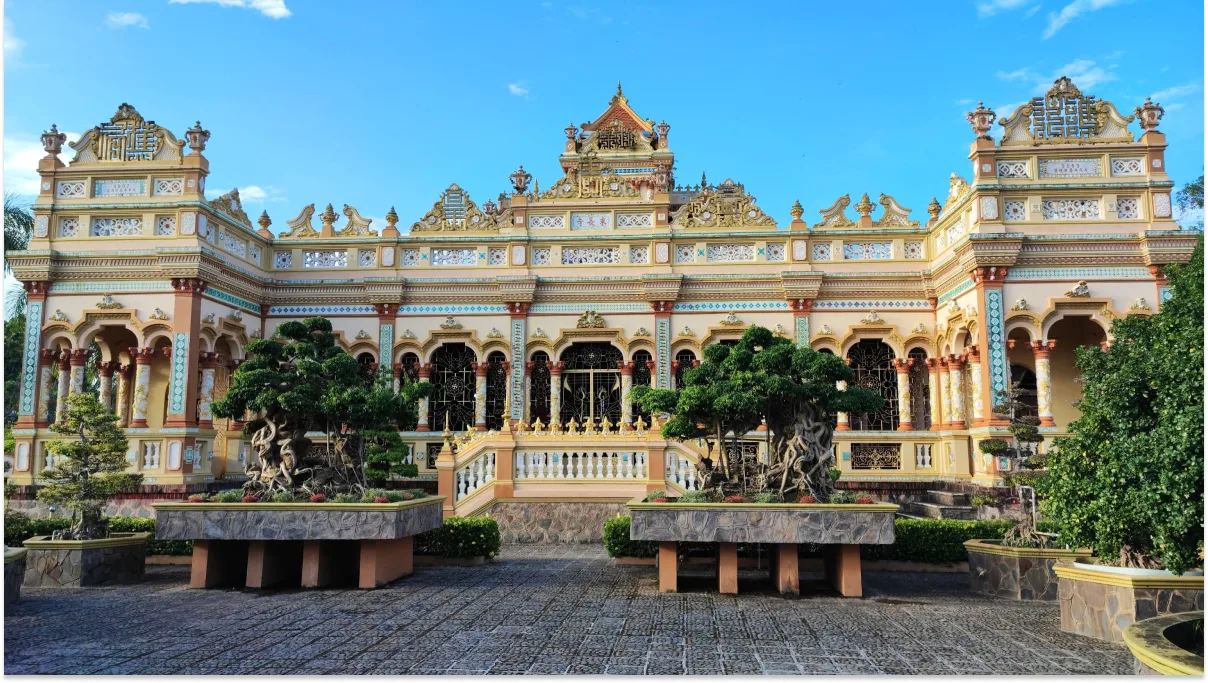
Cost: 800k–1 million VND/day.
Cuisine: My Tho noodles, local fruits.
Tip: Combine with Cai Be floating market or a local garden tour.
Conclusion
From north to south, each temple holds a unique beauty and story: some stand proudly in mountains, others hide by rivers, some are small yet national symbols. Yet all offer a space where travelers can find inner calm.
Visiting temples in Vietnam is not only about seeking peace, but also understanding the culture, history, and spirit of the Vietnamese people – those who harmonize modern life with spiritual roots.
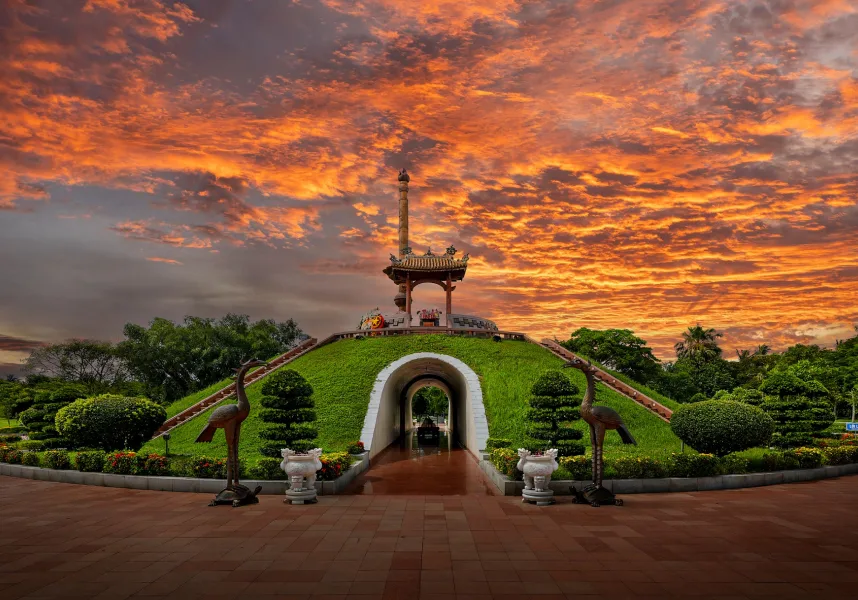
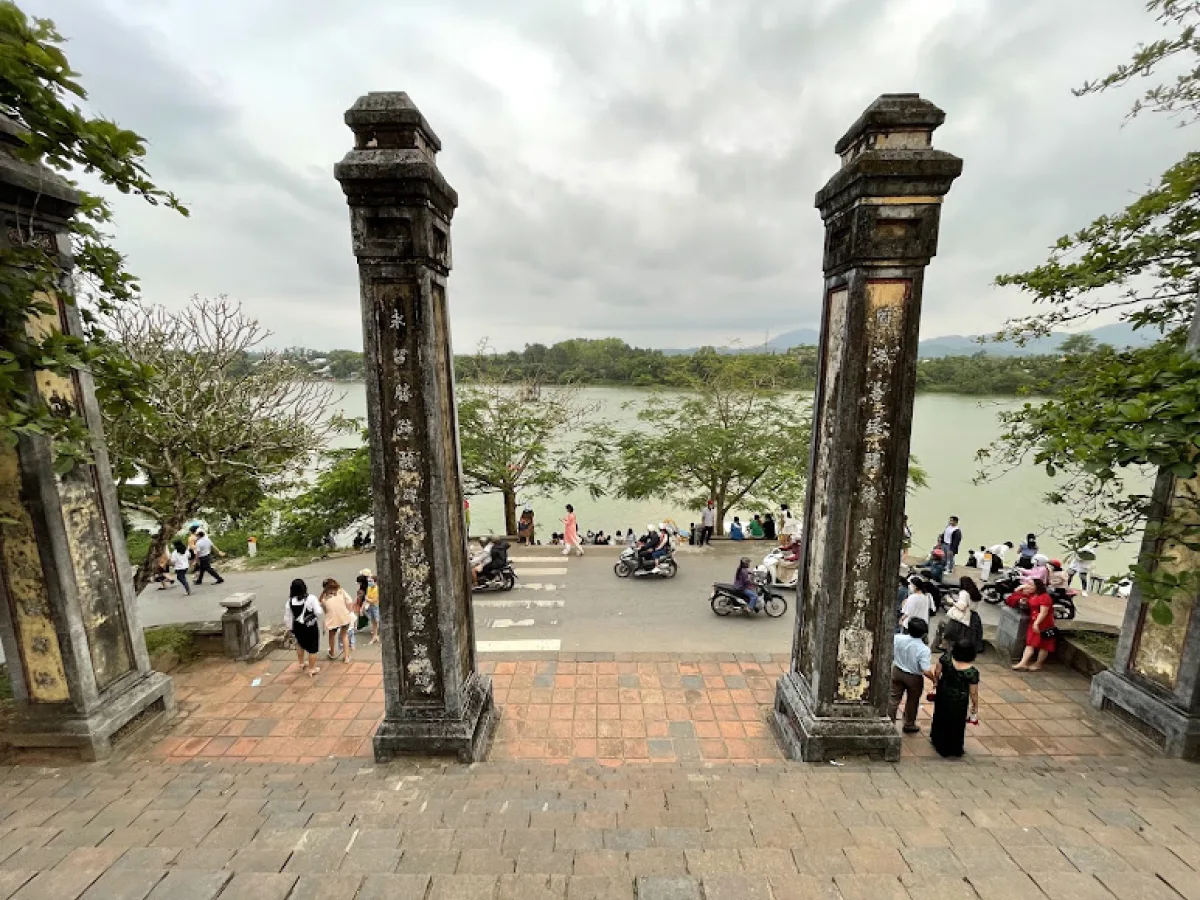
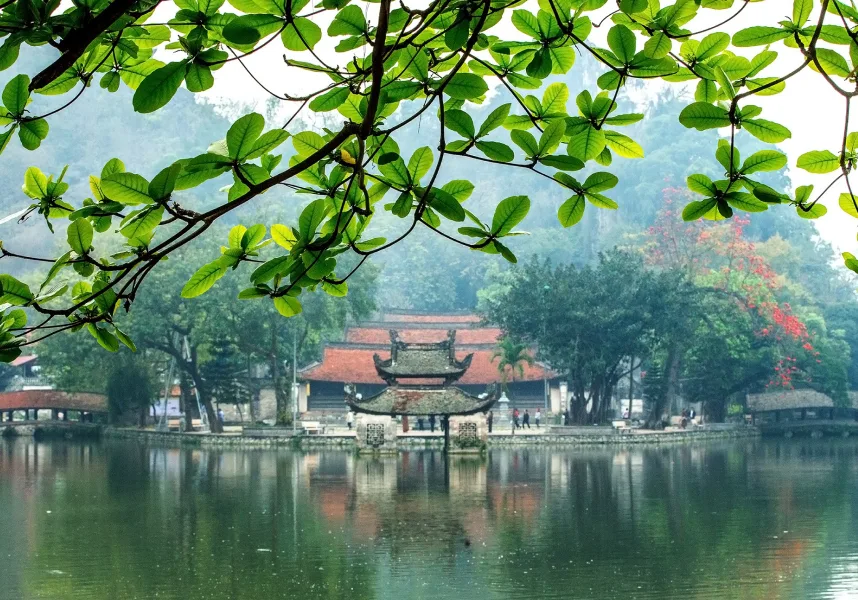
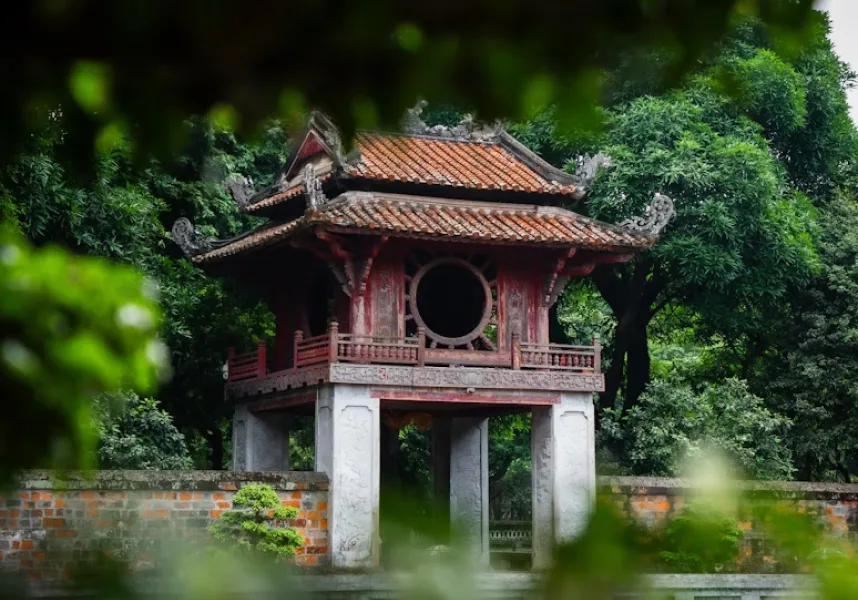
Comments (0)